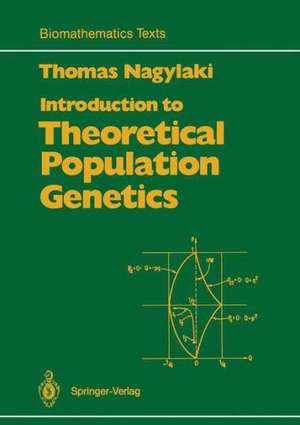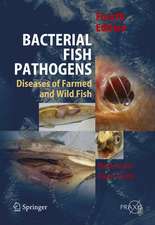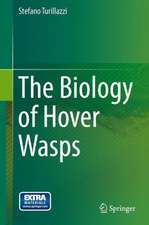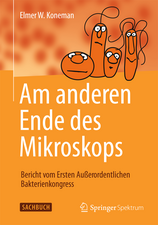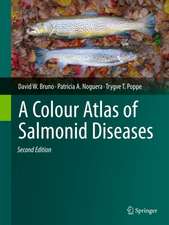Introduction to Theoretical Population Genetics: Biomathematics, cartea 21
Autor Thomas Nagylakien Limba Engleză Paperback – 6 dec 2011
Din seria Biomathematics
-
 Preț: 395.09 lei
Preț: 395.09 lei -
 Preț: 385.62 lei
Preț: 385.62 lei -
 Preț: 395.63 lei
Preț: 395.63 lei -
 Preț: 384.48 lei
Preț: 384.48 lei -
 Preț: 398.15 lei
Preț: 398.15 lei -
 Preț: 391.40 lei
Preț: 391.40 lei -
 Preț: 391.02 lei
Preț: 391.02 lei -
 Preț: 402.38 lei
Preț: 402.38 lei -
 Preț: 404.67 lei
Preț: 404.67 lei -
 Preț: 394.51 lei
Preț: 394.51 lei - 15%
 Preț: 504.02 lei
Preț: 504.02 lei -
 Preț: 386.22 lei
Preț: 386.22 lei - 15%
 Preț: 654.43 lei
Preț: 654.43 lei -
 Preț: 390.25 lei
Preț: 390.25 lei -
 Preț: 390.63 lei
Preț: 390.63 lei -
 Preț: 405.06 lei
Preț: 405.06 lei -
 Preț: 398.74 lei
Preț: 398.74 lei - 15%
 Preț: 596.46 lei
Preț: 596.46 lei
Preț: 704.04 lei
Preț vechi: 828.27 lei
-15% Nou
Puncte Express: 1056
Preț estimativ în valută:
134.71€ • 140.67$ • 111.24£
134.71€ • 140.67$ • 111.24£
Carte tipărită la comandă
Livrare economică 15-29 aprilie
Preluare comenzi: 021 569.72.76
Specificații
ISBN-13: 9783642762161
ISBN-10: 3642762166
Pagini: 388
Ilustrații: XII, 369 p.
Dimensiuni: 170 x 242 x 25 mm
Greutate: 0.62 kg
Ediția:Softcover reprint of the original 1st ed. 1992
Editura: Springer Berlin, Heidelberg
Colecția Springer
Seria Biomathematics
Locul publicării:Berlin, Heidelberg, Germany
ISBN-10: 3642762166
Pagini: 388
Ilustrații: XII, 369 p.
Dimensiuni: 170 x 242 x 25 mm
Greutate: 0.62 kg
Ediția:Softcover reprint of the original 1st ed. 1992
Editura: Springer Berlin, Heidelberg
Colecția Springer
Seria Biomathematics
Locul publicării:Berlin, Heidelberg, Germany
Public țintă
ResearchCuprins
1. Introduction.- 2. Asexual Haploid Populations.- 2.1 Selection.- 2.2 Mutation and Selection.- 2.3 Migration and Selection.- 2.4 Continuous Model with Overlapping Generations.- 2.5 Random Drift.- 2.6 Problems.- 3. Panmictic Populations.- 3.1 The Hardy-Weinberg Law.- 3.2 X-Linkage.- 3.3 Two Loci.- 3.4 Population Subdivision.- 3.5 Genotypic Frequencies in a Finite Population.- 3.6 Problems.- 4. Selection at an Autosomal Locus.- 4.1 Formulation for Multiple Alleles.- 4.2 Dynamics with Two Alleles.- 4.3 Dynamics with Multiple Alleles.- 4.4 Two Alleles with Inbreeding.- 4.5 Variable Environments.- 4.6 Intra-Family Selection.- 4.7 Maternal Inheritance.- 4.8 Meiotic Drive.- 4.9 Mutation and Selection.- 4.10 Continuous Model with Overlapping Generations.- 4.11 Density and Frequency Dependence.- 4.12 Problems.- 5. Nonrandom Mating.- 5.1 Selfing with Selection.- 5.2 Assortative Mating with Multiple Alleles and Distinguishable Genotypes.- 5.3 Assortative Mating with Two Alleles and Complete Dominance.- 5.4 Random Mating with Differential Fertility.- 5.5 Self-Incompatibility Alleles.- 5.6 Pollen and Zygote Elimination.- 5.7 Problems.- 6. Migration and Selection.- 6.1 The Island Model.- 6.2 General Analysis.- 6.3 The Levene Model.- 6.4 Two Diallelic Niches.- 6.5 Problems.- 7. X-Linkage.- 7.1 Formulation for Multiallelic Selection and Mutation.- 7.2 Selection with Two Alleles.- 7.3 Mutation-Selection Balance.- 7.4 Weak Selection.- 7.5 Problems.- 8. Two Loci.- 8.1 General Formulation for Multiple Loci.- 8.2 Analysis for Two Multiallelic Loci.- 8.3 Two Diallelic Loci.- 8.4 Continuous Model with Overlapping Generations.- 8.5 Problems.- 9. Inbreeding and Random Drift.- 9.1 The Inbreeding Coefficient.- 9.2 Calculation of the Inbreeding Coefficient from Pedigrees.- 9.3 Identity RelationsBetween Relatives.- 9.4 Phenotypic Effects of Inbreeding.- 9.5 Regular Systems of Inbreeding.- 9.6 Panmixia in Finite Populations.- 9.7 Heterozygosity under Mutation and Random Drift.- 9.8 The Inbreeding Effective Population Number.- 9.9 The Model for Random Drift of Gene Frequencies.- 9.10 Random Drift of Gene Frequencies.- 9.11 Gene-Frequency Change due to Mutation and Random Drift.- 9.12 The Island Model.- 9.13 The Variance Effective Population Number.- 9.14 Problems.- 10. Quantitative Genetics.- 10.1 The Decomposition of the Variance with Panmixia.- 10.2 The Correlation Between Relatives with Panmixia.- 10.3 The Change in Variance due to Assortative Mating.- 10.4 The Correlation Between Relatives with Assortative Mating.- 10.5 Selection.- 10.6 Mutation-Selection Balance.- 10.7 Problems.- References.- Author Index.
